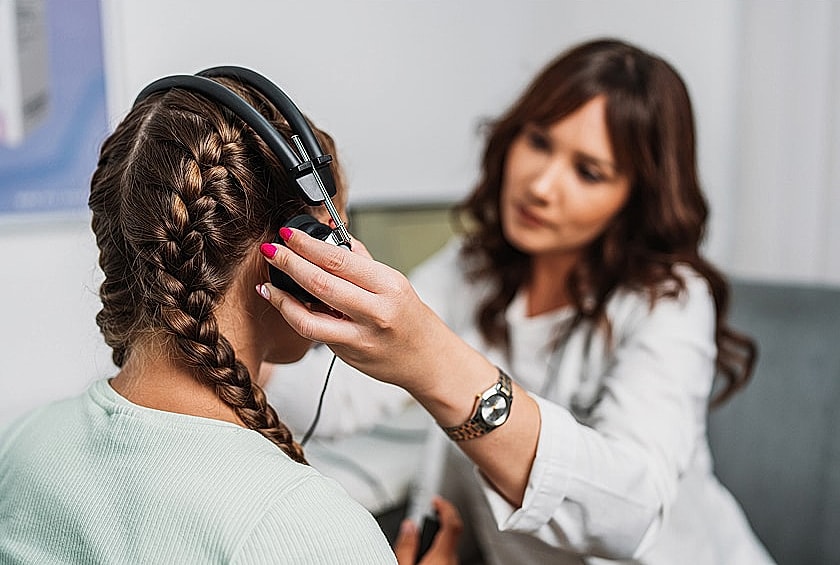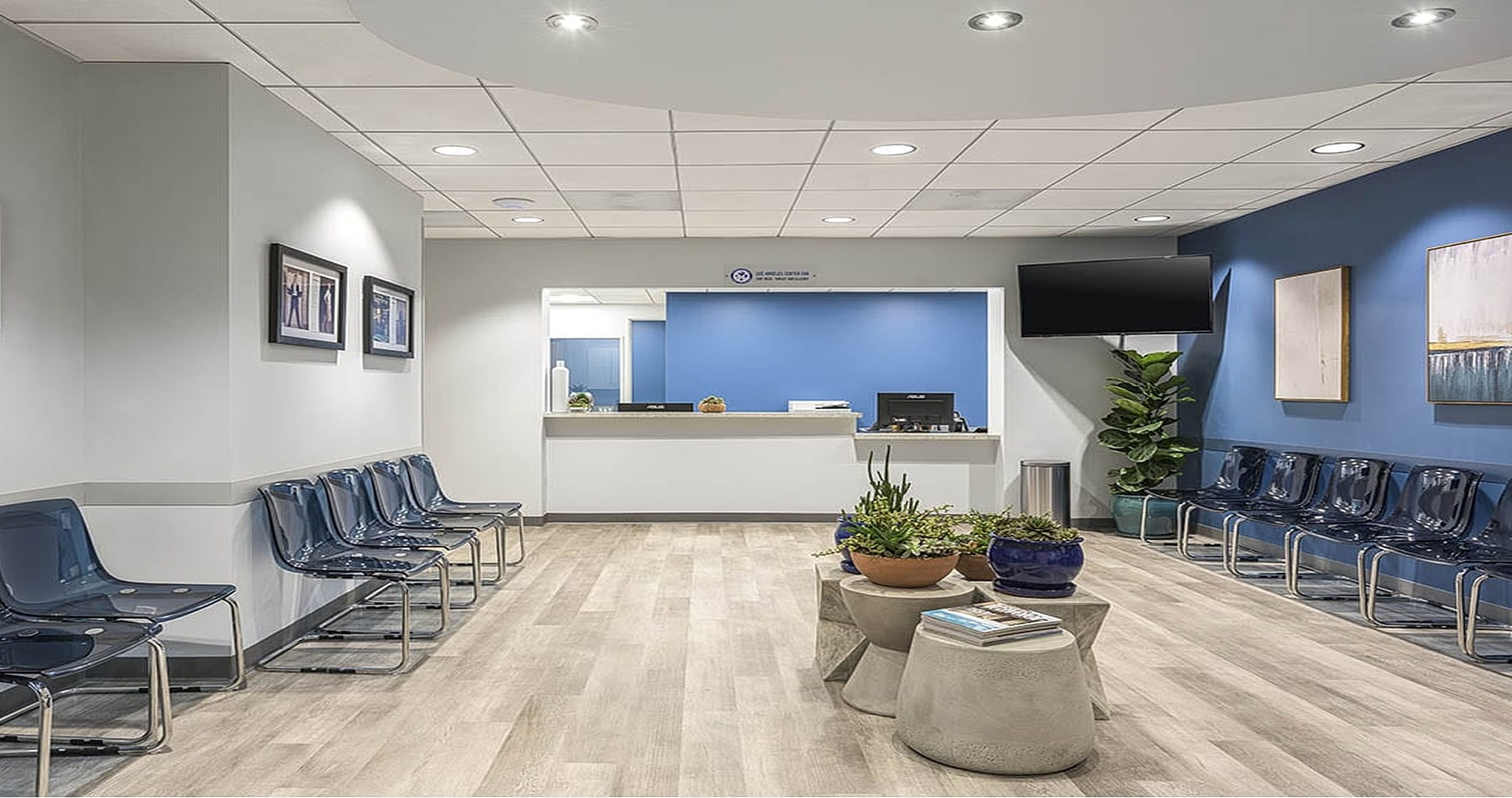Our team specializes in effective TMJ treatments that focus on both symptoms and root causes. Through non-invasive and minimally invasive methods, we tackle discomfort from issues like injury, teeth grinding, arthritis, or poor posture. Our experts craft personalized plans to restore your comfort and improve jaw movement.

















The temporomandibular joint (TMJ) acts as a sliding hinge connecting your jawbone to your skull. It plays a vital role in daily activities like chewing, speaking, and yawning. When this joint becomes inflamed, misaligned, or overused, it can cause persistent discomfort, a condition known as TMJ disorder (TMD).
At SoCal ENT in Palm Springs, we take a personalized, whole-person approach to TMJ care. Whether your symptoms stem from posture, injury, clenching, or arthritis, we offer targeted treatment options to reduce pain, restore mobility, and help you feel like yourself again.





The temporomandibular joint is located on each side of your head where your jaw meets your skull. TMJ disorder happens when this joint or the surrounding muscles become inflamed, overworked, or misaligned. It can affect your ability to eat, speak, sleep, or even concentrate due to chronic discomfort or referred pain.
TMJ disorder may present as:
TMJ dysfunction can be caused by several factors—some obvious, others hidden. Common contributors include:
Neck and shoulder posture can significantly impact TMJ symptoms. These often include neck and jaw pain, as well as tension headaches.
The TMJ is always in action, and over time, its constant movement can lead to joint problems due to repetitive stress or aging.
At SoCal ENT, we carefully evaluate your TMJ health to identify the root cause of your pain.
Your evaluation might cover a physical exam to check for swelling, tenderness, and movement issues. We’ll also assess symptoms such as,
If necessary, imaging tests such as X-rays or MRIs will be used to evaluate joint alignment and potential damage. After diagnosis, a personalized treatment plan will be developed to offer lasting relief and help restore complete jaw function.
Your treatment plan depends on the root cause of your symptoms. At SoCal ENT Palm Springs, we start with a thorough evaluation—including physical exam, health history, and diagnostic imaging if needed. From there, we may recommend one or more of the following:
What It Is: Manual therapy that targets muscle tension and restricted movement in the jaw.
Best for: Patients experiencing muscle tightness, jaw stiffness, or tension-related headaches.
How It Works: Focused pressure and stretching help release tight fascia and restore movement.
Benefits: Often provides immediate relief and helps restore flexibility and comfort.
What It Is: A gentle, drug-free option for relieving TMJ pain and inflammation.
Best for: TMJ pain linked to inflammation, arthritis, or soft tissue irritation.
How It Works: Light energy penetrates tissue to reduce inflammation and encourage healing.
Benefits: Non-invasive, quick relief, and no downtime required after treatment.
What It Is: A tailored treatment plan focused on improving jaw function and reducing discomfort.
Best for: Patients whose TMJ issues stem from muscle imbalances, poor posture, or chronic tension.
How It Works: Combines stretching, strengthening, posture training, and hands-on therapy.
Benefits: Supports long-term relief, better jaw movement, and fewer future flare-ups.
What It Is: Targeted injections that help relax overactive jaw muscles to ease tension and pain.
Best for: Individuals dealing with jaw clenching, bruxism, or persistent TMJ discomfort.
How It Works: Small amounts of Botox are injected into specific jaw muscles to limit overuse and strain.
Benefits: Noticeable relief that typically lasts 3–4 months with no recovery time needed.
What It Is: A personalized, noninvasive strategy that addresses TMJ symptoms by targeting daily habits and stress triggers.
Best for: Individuals whose jaw pain is linked to tension, posture issues, or teeth grinding.
How It Works: Incorporates breathing techniques, gentle jaw stretches, posture correction, and stress-relieving practices tailored to the patient’s needs.
Benefits: Helps reduce symptom flare-ups, improves jaw mobility, and supports long-term results without heavy reliance on medication or devices.

You may be a candidate for TMJ treatment if you experience:
You do not need a referral to see a TMJ specialist at SoCal ENT. We welcome patients of all ages for evaluation and care.
Patients should avoid TMJ Treatment, if you have severe joint damage or unmanaged medical conditions.
Surgical interventions might be too risky, requiring alternative solutions. Always consult with your healthcare provider to assess your symptoms and medical history. This ensures a tailored approach that aligns with your treatment goals while prioritizing safety and effective healing.

Most TMJ treatments have little to no downtime. After therapies like Botox, laser treatment, or physical therapy, you can typically return to work or normal activities right away.
Aftercare may include:
Patients can often resume normal activities right away. However, to maintain lasting relief, regular care and follow-up may be needed.

Many patients notice improvement within the first few weeks of treatment. Full relief may take several sessions, especially if multiple factors are involved.
With consistent care and follow-up, results are often long-lasting. Some patients require maintenance therapy, while others achieve permanent relief through posture correction, muscle retraining, and stress management.
Treatment outcomes vary by method. Physical therapy, Botox, and laser treatments can provide relief for several months. In contrast, lifestyle changes may offer lasting benefits.
No, with proper diagnosis and treatment, most cases of TMJ disorder can be managed or resolved.
Untreated TMJ symptoms can worsen, making it crucial to address the underlying cause for long-term relief.
Coverage varies by insurance plan and treatment type. We'll assist in verifying your benefits during the consultation.
Surgery is rarely required. We prioritize conservative treatment options that are effective and noninvasive.
Yes. Botox relaxes tense jaw muscles and can significantly reduce clenching, pain, and related headaches.